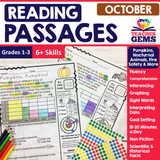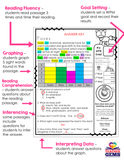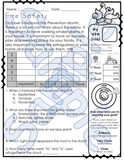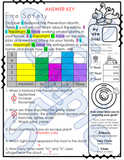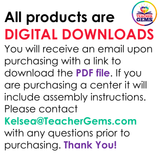October Reading Passages - Nocturnal Animals, Pumpkins, & More
Imagine a simple worksheet with non-fiction reading passages where students practice goal setting, reading fluency, reading comprehension, inferencing, graphing (math) and interpreting data. Now imagine those reading passages including interesting facts and/or scientific facts for students to learn about. What?! That’s right!
*********************************************************************
Click Here to Buy the Bundle and Save!
*********************************************************************
These reading passages are one of a kind because they have a simple, clean format yet are jam-packed with learning! Students practice six skills in one worksheet! Skills include (as mentioned above) goal setting, reading fluency, reading comprehension, inferencing, graphing (math) and interpreting data. These non-fiction reading passages include interesting and scientific or historical facts.
Five pages are about pumpkins and fall, ten are about nocturnal animals, three are on fire safety (October is Fire Prevention Month), and two are on Christopher Columbus / Columbus Day (Columbus Day is always the second Monday in October).
__________________________________________
Grade Levels: 1-3 File Type: PDF (Acrobat) Document File






